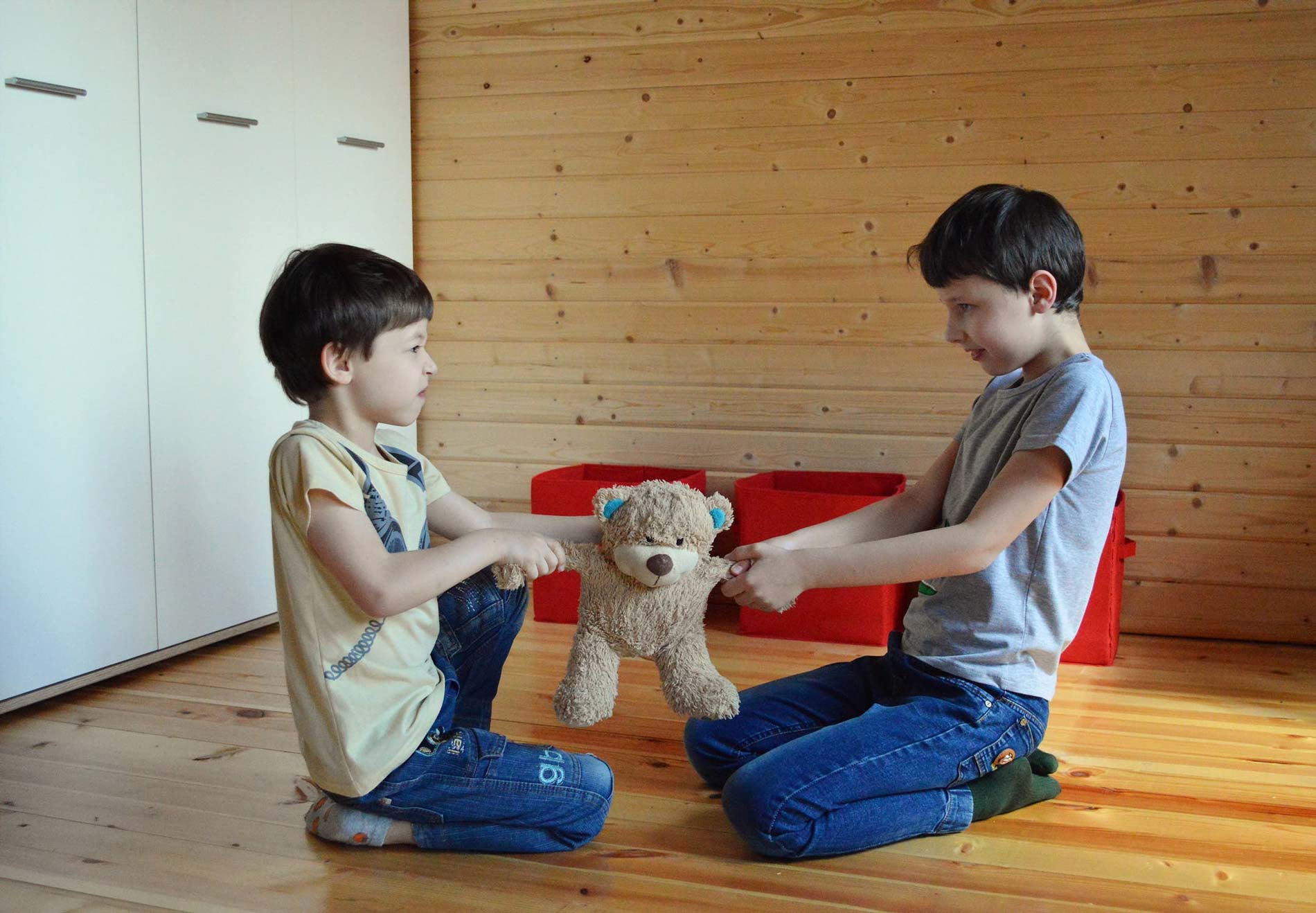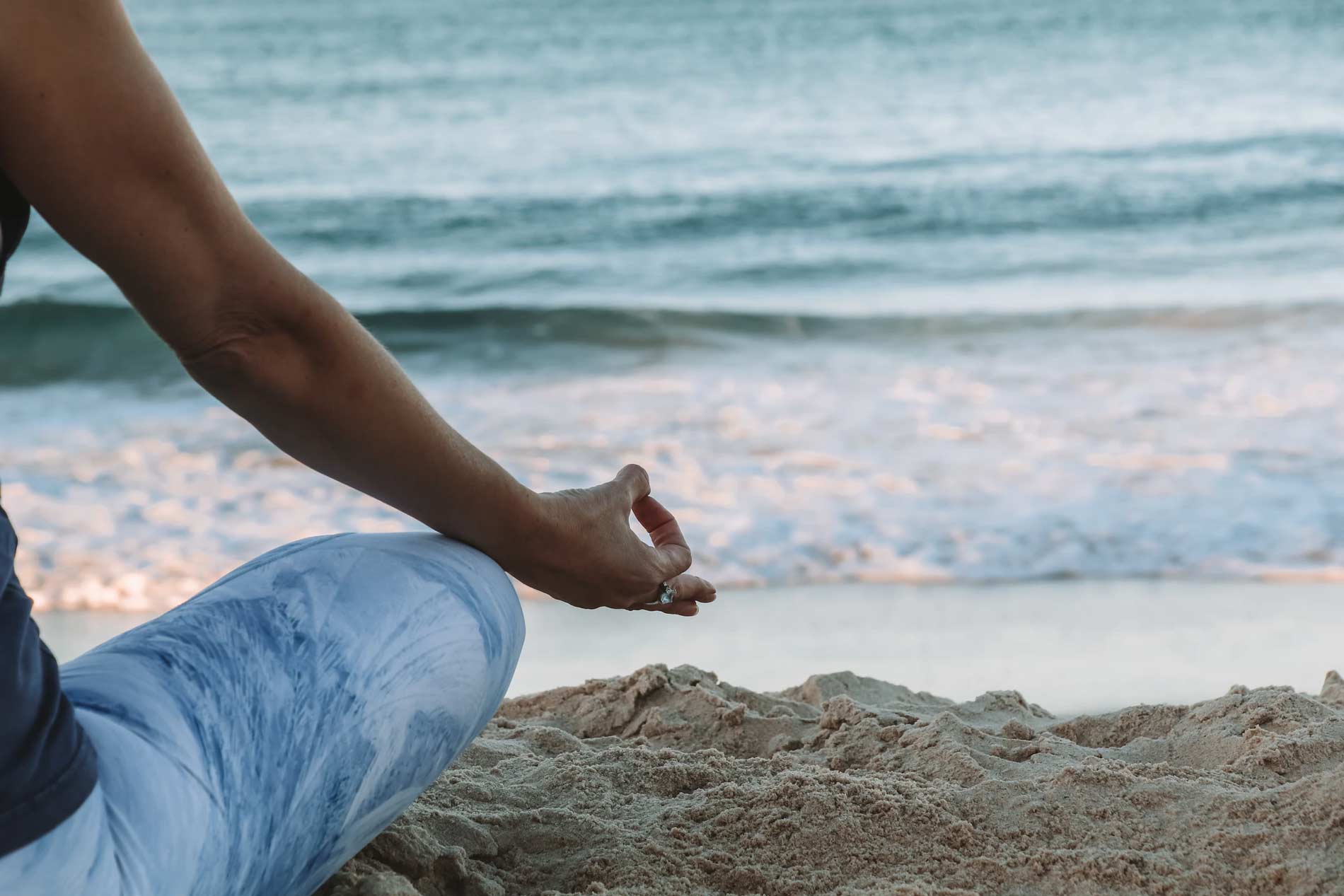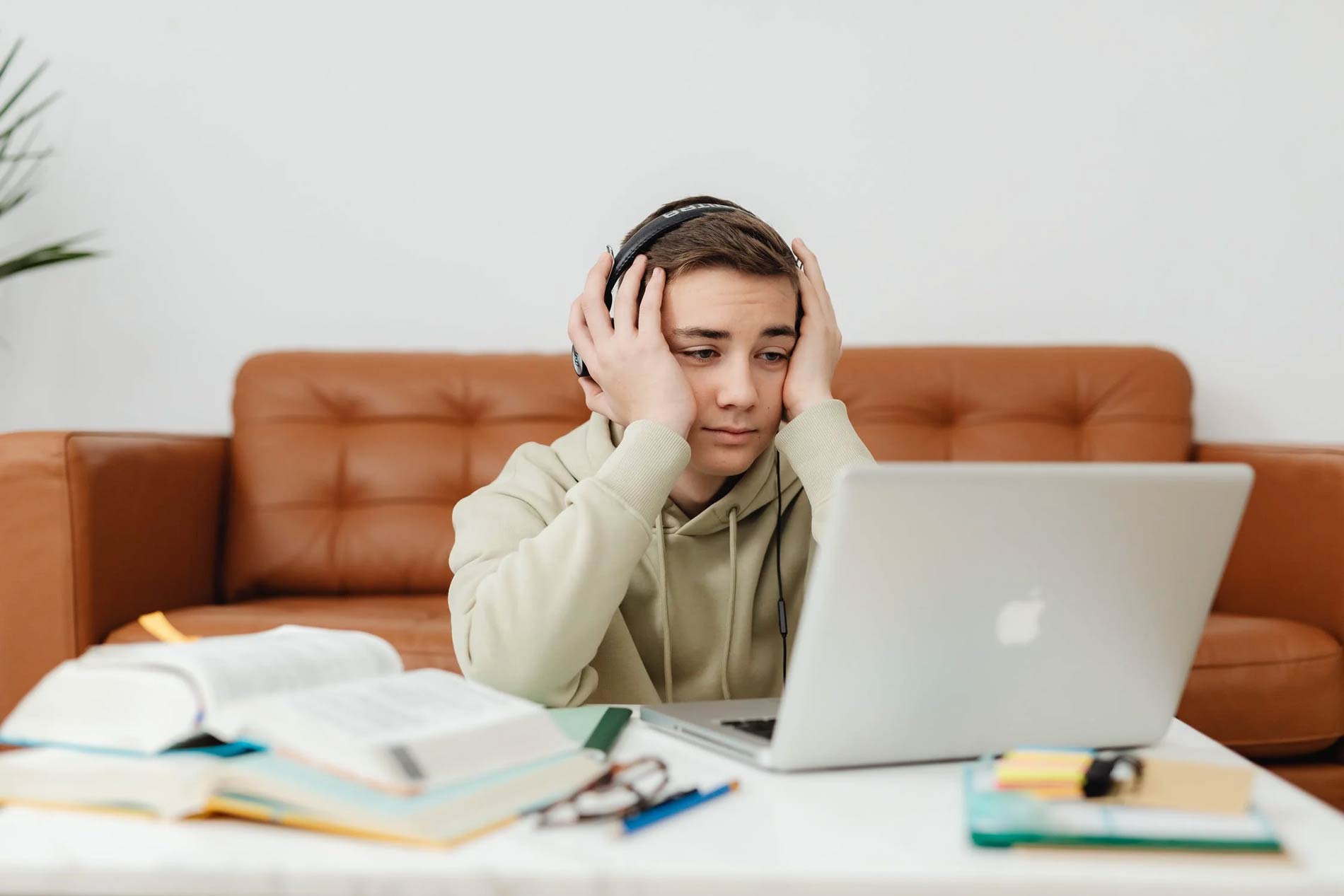When should I seek professional help?
Throughout our lifetime we live different experiences that change the way we behave; they change our routines and the way we conduct ourselves. This is especially true of negative experiences. Sometimes it’s the loss of a loved one or the end of a relationship, moving to another country or changing a job, or simply losing interest in the things we liked before without any apparent reason. All these situations affect us in different ways, and they can be accompanied by feelings such as anger, sadness, anxiety etc. When we do suffer one of these events, we need time to adjust and find ways of coping with those negative feelings. We also need to develop new routines and ways of doing the things we’ve done automatically until now, which takes time and energy. Sometimes it takes a long period of time before we develop these new routines, and sometimes, despite our best efforts, we’re left with the bad feelings for a long time and nothing seems to take it away or help. Once it becomes unbearable, either to us or to the people that are closest to us, and it starts affecting our daily life to the point where we are having difficulty functioning, we may need to seek psychological help.
This, of course, raises a question, why do we wait until the last moment to seek help? When should I ask for help? How do I know whether or not I need professional aid? Psychological problems might not have indicators that are as easily recognizable as those of physical illness (cough’s, fever’s, pain etc.) so it can be difficult to know exactly when you should consider going to a professional. Here we’ll try and give a few clear guidelines as to when it might be time to get the input of a professional.
- Problems with your basic needs.
Humans are complex beings, and each person is a world, but a clear indicator that something could be going wrong is deterioration in our ability to fulfill our basic needs. If you’re having trouble with your sleep (getting to or maintaining it), appetite (loss or extreme urges), loss of energy, feeling the need to isolate yourself. - Experiencing situations that make us feel discomfort.
Having negative feelings, feelings that are uncomfortable, in multiple areas of your life. To the point where we start anticipating that we’re going to feel that way and find ways of avoiding the discomfort such as overindulging in alcohol, avoiding social situations, staying at home, running from something etc. - It’s taking too long.
Having bad experiences is part of life, we all feel sadness, stress, and anxiety sometimes. We can all have problems sleeping over a few consecutive nights, drinking a bit too much during dinner occasionally or days where we don’t feel like socializing and just want to stay in bed. All of these things are completely natural and don’t necessarily indicate a problem. However, when these behaviours becomes a habit, and remain present for weeks or even months, with no end in sight, we might be having a problem.
All that said, remember that deciding to begin therapy doesn’t have to be limited to the situation described above. Whether we want to improve our social skills or our relationships or some other area of our life, therapy can be the tool that will support us in achieving those goals.
Division of Psychology, Psychotherapy and Coaching
Psychologist
Adults and adolescents
Languages: English, Spanish and Norwegian
Como incentivar a autonomía do meo filho
Uma parte fundamental do crescimento das crianças é promover a autonomia, o que fortalece seu senso de responsabilidade, autoconfiança, força de vontade e autodisciplina.
Autonomia é a capacidade de assumir normas sem influência externa. Quando uma criança decide a norma que irá guiar seu comportamento e qual não, ele é capaz de fazer o que acha que deve fazer. As crianças devem desenvolver sua consciência moral e raciocínio para promover a sua autonomia, mas também sua liberdade, força de vontade e autoestima.
Mas, ¿Como podemos ajudar as crianças a promover sua autonomia?
A responsabilidade é uma parte fundamental da aquisição de autonomia. As crianças precisam saber qual é o impacto de suas ações, assumindo as suas consequências. Esta responsabilidade é adquirida a partir da experiência, por isso é importante que possam tomar decisões, cometer erros e aprender com as situações que enfrentam.
Eles devem assumir que são os capitães de sua existência, tornando-se o motor motivacional de si mesmos.
Sempre em quanto desenvolvam a sua capacidade de serem responsáveis são capazes de avaliar uma determinada situação de acordo com sua própria experiência e o que os pais esperam dela, a fim de tomar uma decisão apropriada.
Para que as crianças alcancem autonomia, é importante ter em conta:
- Os pais devem conhecer as habilidades de seus filhos, e assim compreender o que eles são capazes de fazer de acordo com seu estágio evolucionário.
- Os pais devem dar liberdade a seus filhos, deixando-lhos cumprir com o processo contínuo de aprendizagem.
- Para que uma aprendizagem se torne automática, requer prática e tempo, por isso é necessário dar-lhes tempo suficiente para aprender.
- Para dar uma instrução, esta deve ser simples, clara, concisa e precisa, deixando pouco espaço para malos entendidos.
- As consequências sobre a decisão que a criança toma devem ser estabelecidas ao mesmo tempo que a instrução.
- Pequenos esforços devem ser valorizados, mesmo que o objetivo final não tenha sido alcançado. É importante levar em conta o esforço que as crianças têm usado, o comportamento pode ser moldado até atingir seu objetivo.
- Definir o exemplo é a melhor maneira para as crianças aprenderem o que se espera delas. Às vezes eles não sabem o que devem fazer, mas os pais dão o exemplo para que os filhos imitem o comportamento que se espera deles.
É importante que crianças desde muy pequenininhos sejam responsáveis pelas coisas que fazem. Por exemplo, se derramarem água ou leite na mesa, devem colher um pano para poder limpar a mesa. Talvez com um ano vão fazê-lo com dificuldade, mas com três anos pode ter a certeza de que a criança vai fazê-lo sem deixar uma gota na mesa, assim também serão mais cuidadosos quando queram beber do copo.
Outro exemplo é quando eles se recusam a sair com o casaco. Geralmente os pais ficam viciados em uma disputa que termina com a criança chorando e o pai zangado. Embora seja difícil, o pai tem que deixá-lo tomar sua decisão e aprender com seus erros. Portanto, devem deixa-lo sair sem o casaco uma vez para que passe frio e perceba a consequência da decisão que tomo.
Este será sem dúvida um aprendizagem definitivo.
- Entre as idades de três a seis anos, as crianças podem começar a assumir a responsabilidades como vestir-se, arrumar os brinquedos, colocar os sapatos, escovar os dentes, ir sozinho a casa de banho, ajudar a pôr a mesa, ajudar a cozinhar coisas simples, comer sozinho, entre outras coisas. Enquanto a tarefa é automatizada, certamente levará mais tempo para realizá-la do que para os pais, mas é importante ser capaz de automatizar essa atividade, isso só será alcançado através da prática. O papel dos pais deve ser supervisor e adequar a execução dessas tarefas, fazendo as correções precisas. Da mesma forma, os pais podem apoiar a sua autonomia deixando a criança tomar pequenas decisões, como escolher entre dois conjuntos de roupa para ir ao parque, ou escolher o lanche da tarde, ou que querem fazer no fim de semana com os pais. Essas pequenas escolhas podem se tornar uma maneira de negociar com a criança para realizar tarefas tediosas, como recolher os brinquedos.
- Entre as idades de seis e nove anos, os pais devem permitir que as crianças assumam a responsabilidade de preparar a sua mochila para escola, tomar banho sozinho, arrumar o seu quarto, ajudar a preparar uma comida, dobrar e colocar a sua roupa, encher a máquina lavar louça, cuidar do material escolar, cuidar do seu mascote, colocar e retirar a mesa sozinho, ajudar a tirar o lixo, entre outros. Os pais devem estar dispostos a apoiar seus filhos para criar hábitos apropriados. Durante esses anos, é vital ter em mente que os limites e normas devem estar bem estabelecidos. Igualmente, as crianças precisam entender que existem regras negociáveis, mas há outros que não podem ser discutidas. Os pais devem demostrar firmeza nas suas decisões sem se tornarem autoritários, explicando por que uma regra deve ser cumprida, qual é o objetivo perseguido e os benefícios que podem ser obtidos pelo cumprimento dessa regra. Provavelmente, é o momento em que mais motivação a criança precisa para realizar certas atividades, por isso os pais têm que tratar, tanto quanto lês seja possível, que a realização dessas atividades é atrativa para as crianças. Estabelecer um cronograma ou divisão de tarefas para cada membro da família ajuda a gerar um senso de responsabilidade que facilita a coexistência entre todos os membros.
- Entre as idades de nove e doze anos, uma vez que certos hábitos tenham sido estabelecidos, os pais devem aumentar a responsabilidade das crianças. Atividades como limpar seu quarto, fazer a cama, tirar o lixo, escrever mensagens de telefone, fazer pequenas compras, organizar e planejar o trabalho para escola, preparar pratos simples, arrumar a casa de banho, ajudar a limpar e ordenar a casa, passear o seu mascote, ter as chaves da casa, sair sozinho, ficar a dormir na casa de um amigo, entre outras coisas. Durante este estágio a criança começa a exigir cada vez mais independência, o papel dos pais passa de ser um supervisor para ser um observador. Isso não significa que as regras tenham que mudar, elas devem sempre permanecer firmes sem cair no autoritarismo. Uma atividade que pode contribuir para a autonomia nestas idades é alocar uma quantia semanal de dinheiro para que a criança possa economizar ou comprar o que quiser. Esta atribuição não deve ser muito alta o suficiente para comprar um doce ou poupalo para comprar algo mais significativo. Isto ensina as crianças a administrar o seu dinheiro, as consequências de gastar-lho tudo e a importância de poupar.
- Entre as idades de doze e dezasseis anos o papel observador dos pais às vezes pode ser difícil de manter, especialmente durante esse período em que as crianças se tornam adolescentes. O desafio das regras durante esse estágio é parte fundamental do processo de autonomia, os adolescentes precisam se diferenciar dos outros, especialmente de sua família, ao mesmo tempo em que precisam reconhecer se na sua própria história sem dissolver sua individualidade. Os pais devem promover e limitar os passos da independência dos adolescentes, adaptando-os à sua idade e caráter. Ele tem que ouvir a os filhos adolescentes, ter em conta as suas opiniões, explicar por que a regra deve ser mantida e dar-lhes um voto de confiança. Durante esta fase, os pais devem educá-los para a liberdade como parte fundamental da formação de sua dignidade, que é a capacidade dos adolescentes de escolher a melhor maneira de viver. É necessário infundir critérios para saber como escolher e decidir, é promover a capacidade de analisar as consequências positivas e negativas antes de tomar uma decisão.
A autonomia é uma parte fundamental do desenvolvimento da criança que depende do estágio evolutivo em que se encontrem. É de muito importante que, ao promover a independência dos pequenos, sejam estabelecidos hábitos relacionados aos estudos, higiene, sono e alimentação, assim como a sua capacidade de compromisso, generosidade e dignidade. Os pais devem transmitir confiança e segurança às crianças, permitindo-lhes explorar o mundo para aprender o senso de dever e responsabilidade.
Sinews MTI
Psychology, Psychiatry and Speech Therapy
Family Legacies and Expectations
It is completely understandable that we frequently tend to make choices for our children, interfering with their desires and decision-making. We apply what we consider to be more beneficial for them, all with the good intentions that characterize parenting. However, sometimes it is necessary to stop for a moment and reflect on these momentary interferences with our children and ask ourselves the following question: How much of me and my personal history am I depositing in my son / daughter? This is the question that we will examine in the following article.
We live in an era in which the values of acceptance, validation and tolerance towards those we consider different prevails. However, many may have difficulty putting these values of acceptance and validation into practice, resulting in potential reoccurring conflicts within the family. This can result in a feeling of inadequacy in those parents who feel that, despite applying guidelines that they consider to be appropriate and beneficial, observe a deepening in the distance between themselves and their children. There are a multitude of elements that are open for consideration within this topic and so we will focus on the issue of: family legacies and expectations to be fulfilled.
Throughout my experience as a psychologist, I have frequently met parents concerned about the changes in the behavior of their children who come to the consultation seeking answers (and even questions) to the changing attitude of their offspring. They highlight changes in academic results, communication between parent and child or even in friendships. On many occasions, these phenomenological descriptions fail to identify the true feelings of the child, who when consulted, attribute the issues described by the parent to the perceived restriction of their freedom or their decision-making. "My father will never accept it", "They always tell me what I have to do", “My parents want me to study X" are common verbalizations made by young people who come to therapy. They feel deeply that their own preferences and tastes are an authentic disappointment to the values that have been instilled in them and to the expectations placed upon them.
This is not a trivial issue. Young people need to feel accepted by their fathers and mothers. For children it is important to feel the support of the defining figures in their lives who provide the template for their self-worth and self-esteem. Fathers and mothers play a fundamental role in this sense: they provide, through their words and actions, a feeling that, in an ideal situation, translates into affection and acceptance and, ultimately, in the acquisition of freedom.
On occasion this does not happen, and this is where the difficulties in the filial parental relationship can arise. The solution(s) for the problem(s) caused by this are difficult to elaborate on in a brief article such as this. However, every solution starts with a question, so let us return to the question that was posed at the beginning: How much of me and my personal history am I depositing in my son / daughter? and let's expand it: What expectations are not being met from my point of view? Let's end by asking ourselves: Am I really letting my son / daughter live their own life?
SINEWS intends to provide, for all those who feel identified with this article, a safe and reliable space to address the difficulties outlined here.
Sinews MTI
Psychology, Psychiatry and Speech Therapy
Coaching for the first step in your career development: college / university
It is increasingly common for executives to spend vast amounts of money on mapping out future development. There is no doubt about the importance of thinking aloud, discussing all possible paths, and taking some distance from the situation in order to make a decision according to one’s values and life mission. Companies have taken this on-board in recent years and have started including coaching services as a way to provide employees with this safe space for professional development.
So, there's no doubt about the positive impact that coaching has on the matter. For those of you who might be unaware of this area of psychology, coaching is a methodology that helps you to question your present circumstances with the aim of discovering what your next goal is and to draw a plan according to your needs. Everything happens with the unconditional support of a coach, a figure that is next to you to challenge your thoughts, emotions and behavior to enable you to become the best, most effective version of yourself.
In my case, I have spent the last few years working as an executive coach, helping executives all around the globe, no matter the industry, to refocus their development in a direction that will lead them to satisfaction and well-being. More-and-more each day, I value the importance of talent management, as a key factor for companies to achieve the best outcomes and performance from staff. If an employee feels motivated and encouraged to boost his/her talent, then performance will be significantly improved.
This point leads me to one of my most recent conclusions in terms of my own professional development as a coach: why do we wait until someone has reached a certain rung on the career ladder before we offer them the opportunity to connect to their inner drive? Why are we doing executive coaching only with “executives”? Especially when executive coaching refers to any process related to a professional or organizational environment. After this powerful insight, I decided to dive more into executive coaching in early stages of development. What for? Quite simple: if we help the incoming talent to choose a path according to their strengths and we empower them to do what they like the most, they will join the workforce with a self-driven interest to contribute to our society and companies.
When students face their first decision related to professional development, which, as the title of this article mentions, is choosing which college attend, they can be scared, confused and unsure of what do to. The year prior to starting college is one of the most complicated ones, with a lot of external expectations and a fast pace that not everyone can keep up with. I think it is the time, or at least for me, as an executive coach, to provide these students with a transparent environment that will allow them to connect with their passions, to think independently and to design the first steps of their professional career from a foundation of security, decisiveness and self-trust.
So, if you feel you need a break from the noise around you about "the most important decision of your life", if you feel doubtful or hesitant, at SINEWS we will provide you with the support and a judgement-free space where you can carefully think about YOU & YOUR FUTURE.
Sinews MTI
Psychology, Psychiatry and Speech Therapy
Understanding and Supporting Peer Conflict
WHAT IS PEER CONFLICT?
Peer conflict refers to mutual disagreement or hostility between peers or peer groups. It is characterized as conflict between people of equal or similar power (friends); it occurs occasionally; it is unplanned; and it does not involve violence or result in serious harm. Perpetrators of peer conflict do not seek power or attention. However, peer conflict can escalate into violence.
WHAT IS THE ROLE OF PEER CONFLICT IN CHILDREN AND ADOLESCENTS DEVELOPMENT?
Peer relations during middle childhood and adolescence are an important part of children’s social and emotional development. Children and adolescents pick up essential social and communication skills from their peers as they move into late adolescence and early adulthood.
Peer conflict is not necessarily a bad thing; disagreement and conflict are a natural part of life, and children and adolescents need to develop skills to resolve disagreements. However, peer conflict can cause significant emotional and physical harm and can lead to aggressive behaviours when children and adolescents lack the social skills necessary to cope with their frustrations.
Therefore, it is important for parents and educators to be able to identify peer conflict and aggressive behaviours, and to promote positive peer conflict resolution techniques for children and adolescents.
Traditionally, many adults have viewed conflicts between children as undesirable and have tried to prevent them or to intervene. Recent theory and research, however, suggest that peer conflict contributes to children's development. Educators are beginning to focus on helping children develop conflict resolution strategies by providing specific social skills that they can put in place instead of resolve conflicts through adult intervention (Ramsey, 1991). Parents too can focus on helping their children develop such skills and strategies.
We must keep in mind that peer conflict contributes to children's development and represents an important form of social interaction. It is through conflicts that children and young people develop the necessary social and emotional skills to face future difficulties in adult life.
HOW THE PRESENCE OF AN ADULT IMPACTS PEER CONFLICT?
The presence of an adult changes the context of children's conflicts. Children take responsibility for their interactions and generate their own solutions more often when an adult is absent (Laursen & Hartup, 1989). Children's conflicts tend to be more aggressive when an adult is present (Killen & Turiel, 1991). When adults provide solutions, they sometimes make mistakes or are inconsistent or biased in the resolutions they impose. Such inconsistency and bias are especially true in parents' dealings with their own children's conflicts.
HOW CAN PARENTS AND EDUCATORS ADDRESS PEER CONFLICT?
Some relevant implications for adults can be drawn from research on peer conflict.
1. Adults need to be aware of children's intentions. Is this conflict one that the children are truly trying to resolve, or is it verbal play? Adults should help children make clear their own understanding of the conflict.
2. Children's ability to resolve conflicts increases as their verbal competence and ability to take other perspectives grow. If the children involved in a dispute are verbal and empathetic, adults should let them try to work things out themselves.
3. Adults' decisions to intervene should be made after they observe the issues of children's conflicts. Possession issues and name-calling generate less discussion than issues about facts or play decisions.
4. Children who explain their actions to each other are likely to create their own solutions. In conflicts characterized by physical strategies and simple verbal oppositions, adults should help children find more words to use.
5. Adults should note whether the children were playing together before the conflict. Prior interaction and friendship motivate children to resolve disputes on their own.
6. Adults can reduce the frustration of constant conflict by making play spaces accessible and providing ample materials for sharing.
7. Children often rely on adults, who are frequently happy to supply a "fair" solution. Adults should give children time to develop their own resolutions and allow them the choice of negotiating, changing the activity, dropping the issue, or creating new rules.
8. Many conflicts do not involve aggression, and children are frequently able to resolve their disputes. Adults should provide appropriate guidance, yet allow children to manage their own conflicts and resolutions.
Sources:
Wheeler, Edyth J.: Peer Conflicts in the Classroom. ERIC Digest. 1994
Kathleen Sidorowicz, B.A. and Elizabeth C. Hair, PhD: ASSESSING PEER CONFLICT AND AGGRESSIVE BEHAVIORS: A GUIDE FOR OUT-OF-SCHOOL TIME PROGRAM PRACTITIONERS. Child Trends, October 2009.
Sinews MTI
Psychology, Psychiatry and Speech Therapy
A Few Tips For a Healthy Holiday Season
As we are fast approaching the end of the year and Holiday Season, this period can often elicit a lot of stress, discomfort and anxiety in many of my clients.
With the many social and family gatherings, the last minute gifts shopping and end of the business year craziness, many people often feel overwhelmed, pressed for time and exhausted..
It is totally understandable and to help you cope with this special time of the year, I’d like to offer you a few simple tips to keep yourself sane and healthy even throughout the Holiday Season.
Here are 5 of my favourite tips for a healthy holiday season:
Slow Down & Cut Back:
The best way to avoid getting overwhelmed and sick at the end of the year is to slow yourself down. If your schedule is too crazy to allow you to slow down; then let this be an indication that your plate is already too full and that it’s time to prioritize and cut down on your projects and to-do’s. You’ll feel instant relief when you realize you don’t have to do it all at once nor right away. Re-evaluate what is most important and focus on that task/project.
Schedule Me-Time:
If you are unable to slow down at work, then at least make sure you carve out dedicated ME-time into your weekly schedule. Taking the time for self-care will allow you to relax and regroup. Not only will you feel rejuvenated but it will also help boost your immunity and bring down your stress levels- both essential for staying healthy and sane.
Ground Yourself With Wholesome Nutrition:
As a holistic nutritionist, teaching my clients how they can use nutrition to feel supported and strong is one of my favourite things to do. Indeed, when you consume wholesome and nutrients-dense foods, you’ll feel more grounded, energized, healthy and happy. It is all connected. Here are a few foods I would highly recommend at this time of the year: grounding root vegetables (squash, pumpkin, sweet potato), seasonal fruits (apples, pears, pomegranates, persimmons), warming and anti-inflammatory spices (ginger, turmeric, cardamom, cumin & cayenne pepper) and immune-boosting leafy greens and cruciferous veggies.
Keep Moving:
I know it can be very tempting to skip exercising and keeping your body moving when it’s cold outside or when we are so busy.. But this is exactly when we need to keep moving. Moving your body regularly will maintain your energy levels up, improve your mood and keep you healthy and strong. Think of it as a fun way to give yourself a break. Choose forms of movements that you truly enjoy doing and that you can look forward to.
Sleep It Off:
This is another important self-care practice that often gets tossed out the window at this time of the year. Yet, sleep is primordial for your health and well-being, especially during the Holiday season! Make it a priority by developing a night time routine that will help you unwind and signal to your brain that it’s time to relax and get ready for some much needed rest & rejuvenation. Note: Avoid screens for at least 45 minutes before bed. This will really help you if you’re having a hard time falling into a deep and restful sleep.
And there you have it, a few simple but very effective ways to stay healthy, strong and sane this Holiday season.
For more tips, or if you would like to figure out exactly how you can implement specific lifestyle and nutritional tips to support your health, feel free to call or write to Sinews.
Sinews MTI
Psychology, Psychiatry and Speech Therapy
The Benefits of Mindfulness
In a world of constant movement and rush, the need for peace and calm is increasing significantly. People are experiencing higher levels of stress and anxiety as their biological response to overcome the demands of their work and life. But the resources they use are burning them out from the inside, so, as a result new tools such as mindfulness are becoming more and more important.
Mindfulness is a special type of meditation that encourages people to experience their present life with a different focus. Basically, it helps individuals to slow down and appreciate the beauty around them. The only thing they need is a personal commitment with their psychological and physical health and a lot of practice.
The only way that people can reach a mindful state is by practicing their disconnection from the noise outside on a daily basis. As we do in SINEWS Multilingual Therapy Institute, you can support and guide your practice through group sessions, but if you want to see how your heart rate decreases or your anxiety goes away, it’s up to you to practice mindfulness every day.
And last but not least, we need to mention that mindfulness means more than just letting your mind go blank. It’s about building consciousness about the present moment, everything that happens both inside and out. It’s a changing experience that helps you improve your wellbeing and long-term life satisfaction.
If we search for the word mindfulness in internet, we might find more than 500,000 different resources that try to help us to understand this concept. Even within those search results we might find plenty of different recommendations to become a mindful person. But, from my professional perspective, there’s only one real way to really discover what mindfulness means: practicing it.
In general terms, we could say that mindfulness is not such as a new trend. During millions of years, Asian cultures have been practicing many types of meditation. These practices have the purpose of helping you to disconnect from the surroundings and to connect with what really matters: the individual. The way in which you disconnect from your surroundings depends on the approach of your chosen practice, but the core of it is the same: taking care of your psychological balance. And because of this core, we, as psychologists, are encouraging our clients more and more to become mindful. Also, this basic core is closely linked to the basic idea that says that mindfulness helps us to train our mind to put the focus on what we really want to be focused. This means that we become capable of shifting our focus according to the situation we are in. A clear example of this is when we are at the office having a very busy day, with a high workload and lots of demands from our boss or coworkers. Being mindful is the ability to disconnect even for five minutes and enjoy that break regardless of the bustling environment.
So, why do we recommend practicing mindfulness? It might seem a bit confusing that clinical psychologists recommend the practice of this “new” trend as a way to improve our clients’ wellbeing when there are many other techniques that have been scientifically proven to help in that aspect. It is because our experience has shown us the multiple benefits of mindfulness, not only with functional clients but also for clients suffering from anxiety or depression. These benefits can be classified in two main types: physical benefits and psychological benefits. Let’s dive into each on these:
Physical benefits of mindfulness.
According to numerous research studies, mindfulness has been proven to:
-
Improve our heart rate, reducing the likelihood to have heart diseases.
-
Decrease the negative impact of psychological symptoms.
-
Balance our autonomous nervous system.
-
Increase the amount of grey matter in the brain, which contains our motor and sensory neurons.
-
Enhances the balance of our limbic system.
We tend to put a lot of physical pressure on our bodies, in addition to the pressure on our minds: we go rushing everywhere, we don’t pay attention to our body signals, etc. Just by practicing mindfulness for 10 minutes every day, we can benefit from it and we will set our physical health as a priority.
A good example we tend to give our clients is to use their walks to their office as a way to disconnect from the stress of the ride. How? Imagine that you are walking quickly to arrive to the office, your mind is anticipating all the things that might happen during the day. In the moment in which you realize this speed, start walking slowly, putting your focus of attention in how your foot guide you consciously to a new place, enjoying the weather, the beauty of your pathway. You will see how your heart rate decreases significantly and you will get to work with a low base level of activation (stress). That’s being mindful.
Psychological benefits of mindfulness.
We could be talking about the psychological benefits of this practice for hours, and all the clients that have tried mindfulness with support us with their own experiences. In my case, after a few years of daily practice of mindfulness, I would highlight the following three main benefits:
-
Mindfulness facilitates building your self-concept based on what you learn about yourself. Every time you disconnect from the outside and focus on your breathing, you’re connecting to your inner self. This way it is easy to maintain an internal dialogue with your feelings and basic sensations, and therefore, discover what you like and what you don’t like. And how does it happen? Keep in mind that mindfulness is not only about the 10 minutes you practice it, it’s about committing to the mindset and life reality with a different perspective.
-
Mindfulness connects you to the present moment. Researches tell us that we expend most of our time thinking about past experiences (mostly associated to negative emotions such as regret, guilt or sadness) or trying to anticipate what it’s going to happen in the future (reinforcing an unreasonable amount of need of control and fear to uncertainty). We live our lives without consciousness, without paying attention to what happens. Mindfulness train us to have mind flexibility to know when what we are thinking doesn’t allow us to be in the present situation. And one essential thing: this doesn’t mean we shouldn’t pay attention to negative emotions, actually we really need them. But we need to learn to deal and accept negative emotions but being capable to look for the positive and present ones.
-
Mindfulness encourages you to be grateful and appreciate the beauty around you. Because it’s not only about being in the present knowing how you really are, but also to be open to enjoying what happens around you. There’s beauty in everything we do and we experience, but it requires time to really focus on it. Mindfulness helps you to give yourself a break to appreciate the small details that makes the difference. And as your awareness grows, you gratitude too. You will become grateful for feeling alive because you will learn how many things you have missed during your life and how beautiful is life now that you experience it with full attention.
But these are not the only benefits. From my point of view, there are other two benefits worth mentioning: mindfulness boosts your creativity and it facilitates the use of empathy and social skills in difficult contexts. If you want to become a more “think outside of the box” person, give yourself the space to connect with fresh air. Or, if you want to improve your social interaction, cultivate your mindful state to be able to focus on the positive things in social context instead on the elements that trigger your anxiety.
To close this article, I would like to go one step further. Mindfulness is not just a practice or a theory of well-being. Mindfulness is not even just a meditation practice. Mindfulness is a type of mindset. Mindfulness is a way of living. Mindfulness is a way to focus on the present to experience life from a different light. That’s the difficult part of becoming mindful, but if you reach that state of mind, you will discover the beauty of your surroundings and you will be more satisfied without having the active need to reach for happiness. Your mindful mind will do all the work for you.
In SINEWS we actively build a space of peace and growth for individuals who wants to improve their life satisfaction. If you want to join our powerful group sessions, contact info@sinews.es.
Sinews MTI
Psychology, Psychiatry and Speech Therapy
Meet your new School Counsellor!
What does a School Counsellor do?
Hello everyone! My name is Juan Yague and I am the School Counsellor at King’s College in Soto de Viñuelos. I have previously worked in as a School Counsellor and Orientador Educativo in both primary and secondary schools. I have also worked special education teacher and educational evaluator in the United States. I love everything about the world of education and firmly believe in quality education that offers students the possibility of developing into adults whose values are based upon effort and respect.
This school year, I will take on a new role that I’m sure will have a positive impact on the well-being and relationships of all members of the school. The school counsellor is a qualified professional that has obtained the necessary training and practice in listening to people and offering guidance and advice based on the principles of confidentiality and respect. In this manner, the School Counsellor listens without judging the worries and problems of students, parents and teachers trying to offer help and accompaniment in any difficult situation or disorientation.
School Counsellors are trained to help people confront and resolve their problems in situations that we feel we don’t have the tools or ability to resolve ourselves. They also are there to help at the time big or important decisions need to be made, clear up any confusing situations or even to get to know oneself to be able to live in a mindful and satisfactory way. Stress, anxiety, personal and family problems, and relationships with friends are all examples of situations that if we don’t know how to control well, can have a negative impact on our lives. This is why it is important to seek help from a professional that can help identify the problem and find the best solution for it.
On the other hand, the school counsellor also plays a fundamental role in the overall coexistence of the school as a whole, assisting students in maintaining healthy relationships. During adolescence, it is extremely important to be able to count on your group of friends - to have a group that you can share anything with, a group that you are comfortable being around, where you are accepted and supported. The School Counsellor’s job is to watch and observe these types of interactions and relationships in order to ensure a life for students where they feel welcome and integrated.
As for teachers, the School Counsellor can also help them deal with their daily struggles and any difficulties they might have, especially when dealing with various situations and behavioral issues in the classroom.
Finally, the School Counsellor is also available to hear out any families part of the school community.
Many parents need information or orientation of the education of their children, how to manage their behavior, situations at home, or simply to be able to better support students in their academic achievements.
There is evidence associated with having school services of orientation and advising, and how it has created a positive impact in academic results and achievements in general. Having a larger amount of this type of assistance has also been proven to lead to higher satisfaction rates in students and also parents, teachers, and other personnel. Because of this, I invite you all to come by my office with any question or concern you might have. I will be waiting, ready to assist.
School Counsellor
SINEWS at King’s College
Sinews MTI
Psychology, Psychiatry and Speech Therapy
Amor con ojeras

El nacimiento del primer hijo lleva consigo una auténtica revolución en la vida de los padres: es un momento especial, en el cual dos personas de repente se encuentran responsables de una criatura totalmente dependiente de ellos y cuyas prioridades irán por delante de las suyas, modificando completamente buena parte de las costumbres que tenían hasta entonces. Ése es el punto de partida de “Amor con Ojeras”, un divertido libro ilustrado.
Su enfoque, bastante pragmático, es muy claro: con un bebé el tiempo para cuidar la vida de pareja se reduce muchísimo y por eso hay que saberlo aprovechar bien. Por ejemplo en el libro se muestra que con tan sólo tres horas a la semana (divididas en pequeños momentos) puede haber un salto de calidad: consejos sencillos (desde enviarse mensajes cariñosos por WhatsApp hasta escuchar lo que ha hecho el otro durante su día, decir lo positivo e incluso encontrar un par de horas para una “cita de novios”, en la cual hay que esforzarse en no hablar de lo que ocupa y preocupa a los padres primerizos,es decir el bebé).
Muchos de los consejos que se dan en este libro están relacionados con la gestión de las expectativas. Si ya en general uno de los mayores enemigos para el buen funcionamiento de cualquier relación de pareja puede ser la gestión de las expectativas, ésto se amplifica enormemente en el posparto, que para muchos padres viene cargado de muchísimas expectativas formadas durante el embarazo que es muy difícil que se lleguen a cumplir.
En el posparto y los meses posteriores además, hay que tomar en cuenta un elemento muy importante, que caracteriza muchas viñetas del libro y con las que se identificará más fácilmente cualquier padre primerizo: el cansancio, fiel compañero de viaje durante muchos meses (o años) para casi cualquier padre y madre.
El cansancio dificulta aún más la vida de pareja si no se sabe gestionar con empatía y sentido común, dejando al lado expectativas demasiado altas. Entendiendo que cuando estáis cansada/o a más no poder simplemente no podéis ser siempre amables, alegres y contentos: es importante no tomárselo de forma personal, recurrir al reproche.
Además es relevante, según indica autora del libro conseguir cada día, a pesar del cansancio, unos momentos de intimidad y cariño, gracias al cual la vida de pareja, con especial énfasis en la vida sexual, no sólo aguanta sin que incluso puede quedar beneficiada del gran cambio que ha tomado.
Sin duda el cambio, tanto físico como psicológicos que la maternidad y la paternidad provoca en el deseo y en la práctica sexual es otro de los temas más importantes de este libro, y el tono de sus viñetas, una mezcla entre humor explícito, ironía y ternura, cumplen una función muy importante, la de visibilizar un tema que afecta a todos pero del que se habla muy poco o nada en público.
Como psicóloga y terapeuta de pareja, al igual que la autora del libro, Mamen Jímenez, recomiendo este libro por qué mientras que existen miles y miles de publicaciones enfocadas a ayudar a los nuevos padres a enfrentarse con éxito al hasta entonces desconocido mundo de los bebés y de la crianza, muy poco se habla y aún menos se escribe sobre los cambios en la relación de pareja tras el nacimiento de un hijo.
En “Amor con ojeras” se dan consejos para que las parejas salgan reforzadas de la aventura que es convertirse en padres y se hace a través de grandes dosis de humor, divertidas ilustraciones, mostrando tantas situaciones en las cuales todos los padres primerizos se sentirán identificados pero sobre todo ofreciéndoles herramientas para que puedan aprender a cuidar la relación de pareja tras los incontables cambios que conlleva el nacimiento de un hijo.
- Tapa dura: 156 páginas
- Editor: Lunwerg Editores
- Idioma: Español
- ISBN-10: 8416489688
Sinews MTI
Psychology, Psychiatry and Speech Therapy
Study Coaching en Sinews
Is the academic year already starting to take a toll on you or your child? Studies can often be overwhelming for myriad reasons. Our study coach and Educational Psychologist Juan explains how adding sessions with a study coach into your life can be a wonderful way to not only keep up with the demands of academic life but to thrive!
What’s Study Coaching?
Study Coaching is a working partnership that focuses on the process of learning. Together with a professional coach, any student can examine their learning styles, habits of working, and current difficulties or barriers to success.
The Study Coach and student will work as a team to create and put in place more effective strategies and set up personal goals in academic and learning areas.
The aim of Study Coaching is to heighten awareness of what it takes to achieve academic success and anchor this with new strategies.
How can the Study Coach help students?
The Study Coach will help students find out what is preventing them from being successful in academics. This process involves one-on-one sessions along with small group workshops tailored to specific needs. The Study Coach works along with the student throughout a process of discovering their strengths and areas in need of improvement. Then, the Study Coach provides guidance to create a personalized academic success plan.
Another important component of Study Coaching is helping students understand how their use of time and levels of organization or disorganization impact their studies and academic achievement. In the coaching process, it can also be important to train the student in some study skills such as reading comprehension, developing a successful writing process, taking and reviewing notes, preparing for tests and exams, managing the test taking process, etc.
Who can benefit from Study Coaching?
Any student at any grade level can benefit from Study Coaching. From students at highest levels of Primary Education, when it is necessary to start building up basic study habits and organizational skills, to College Students that may feel in need of guidance to improve their performance as students or just learn further strategies to reach optimal levels of motivation and higher academic achievement. Sometimes, a lack of tools and strategies results in high levels of anxiety and distress. Then is when Study Coaching helps the student to prioritize and better organize in order to be efficient and fully benefit from time spent on studying.
How can Study Coaching help Students with Disabilities?
Given the nature of many disabilities, learning can be uneven over time.
Whether a person experiences visual impairments, hearing loss, ADHD, learning disabilities, chronic or temporary health conditions, or mental health conditions, there are times when students are less able to be fully present to learn certain strategies and skills or take reasoning and problem solving to higher levels. These moments of less optimal learning can create what later appear as gaps in learning or functioning.
Study Coaching can help students with learning disabilities to acquire basic study skills and to become more independent and functional so they can overcome difficulties and barriers inherent to any condition.
Can I benefit from this service?
Of course! All you need to do to contract our services is get in touch! You can speak with us via telephone 917001979 or sending an email to info@sinews.es.
Sinews MTI
Psychology, Psychiatry and Speech Therapy












